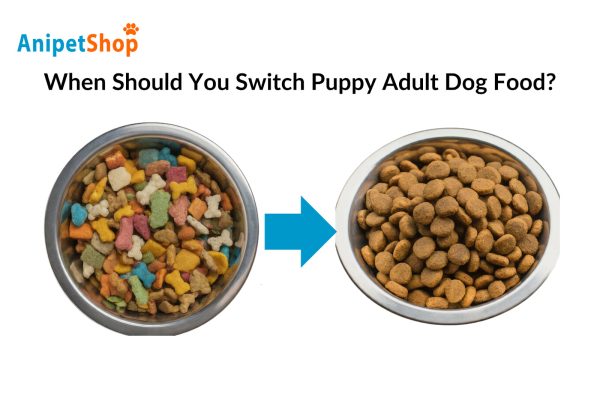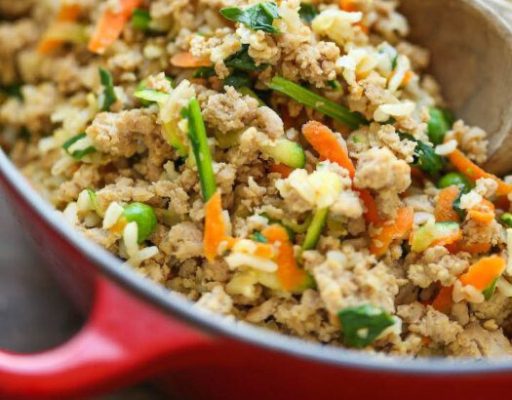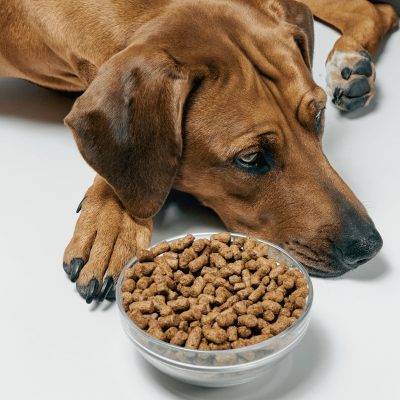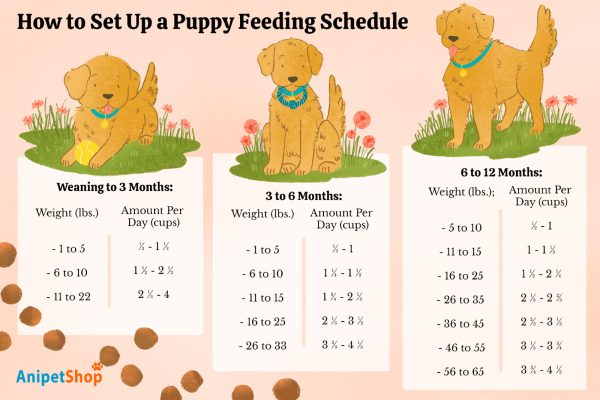When Should You Switch Puppy Adult Dog Food
Proper nutrition plays a crucial role in a dog’s growth and development. Knowing when to transition from puppy to adult dog food is essential for supporting your canine companion’s needs. This guide will explore the reasons behind this dietary change and provide you with the information necessary to make an informed decision for your furry friend.

What’s the Difference Between Puppy and Adult Dog Food?
AAFCO (Association of American Feed Control Officials) is the regulatory body that sets the standards for pet food nutrition.
Puppy food is formulated to meet the higher caloric and nutrient requirements of growing puppies, while adult dog food is designed to maintain the healthy condition of mature canines.
Puppy food typically contains more calories, protein, and essential vitamins and minerals to support rapid growth, bone development, and overall well-being. In contrast, adult dog food is formulated with a lower calorie density to meet the maintenance needs of fully grown dogs.
When to Switch to Adult Dog Food
The timing for transitioning from puppy to adult dog food is crucial. This switch should be made with care to ensure your dog’s nutritional needs are continuously met.
Breed Size
The recommended timeline for switching to adult dog food varies depending on your dog’s breed size:
| Breeds | Weight | Adult | Senior |
| Small breeds | 5-15 lbs | 1-7 years | 7-15 years |
| Medium-size breeds | 15-55 lbs | 1-8 years | 8-13 years |
| Large breeds | 55-100 lbs | 1-9 years | 9-12 years |
| Giant breeds | 100-200 lbs | 2-10 years | 10-11 years |
Spaying or Neutering
While breed size is an important factor in determining when to transition from puppy food to adult dog food, it is not the only consideration. Spaying or neutering a dog can reduce their caloric requirements, as these procedures remove the hormones that drive growth and development. This means that even after a dog has reached their full adult size, they may still require fewer calories than an intact dog of the same breed. Failing to adjust a dog’s food intake accordingly after spaying or neutering can lead to weight gain and obesity, which can have negative health consequences.
It’s important to note that spaying or neutering does not slow down a puppy’s development or physical maturation. However, these procedures can influence the dog’s nutritional needs and should be considered when transitioning to adult dog food. The best solution is to determine the appropriate feeding schedule and food type for your dog, taking into account their breed, age, activity level, and spay/neuter status.
Switching Too Early or Too Late
Transitioning your puppy to adult dog food too early or too late can have adverse consequences. Switching too early may deprive your growing dog of essential nutrients, while waiting too long can lead to excess weight gain and other health issues.
If you switch too early, your puppy may not receive the necessary calories, protein, and nutrients required for proper growth and development. This can result in stunted growth, weakened bones, and a compromised immune system.
On the other hand, delaying the switch to adult dog food can cause your dog to become overweight or obese, leading to joint problems, cardiovascular issues, and other health concerns.
How to Pick the Right Adult Dog Food
When selecting an adult dog food, there are several factors to consider:
Choosing a Brand
Look for brands that meet AAFCO standards for adult dog food. Research the company’s reputation, ingredient quality, and customer reviews to ensure you’re providing your dog with a high-quality, balanced diet.
Dry Food vs. Wet Food
Step 2 in determining the appropriate dog food for your pet is to decide whether you will be feeding dry food, wet food, or a combination of the two. This decision will depend on your dog’s individual needs and preferences, as each type of food has its own unique advantages and disadvantages.
Benefits of Wet Food:
- Increased moisture content, which can help keep dogs hydrated and support urinary tract health
- Typically more palatable and appetizing for dogs, especially those who may be picky eaters
- Often easier for older dogs or those with dental issues to chew and swallow
- Can be a good option for dogs with certain medical conditions, such as kidney disease, that require increased fluid intake

Benefits of Dry Food:
- Generally more cost-effective per serving than wet food
- Provides a crunchy texture that can help clean teeth and maintain dental health
- Easier to measure and portion out, which can be helpful for weight management
- Typically has a longer shelf life than wet food, making it a convenient option for busy pet owners
- Can be a good choice for dogs who need to maintain a specific caloric intake or macronutrient ratio

Nutritional Requirements
Seek for a food that contains:
- Minerals including calcium, phosphorus, potassium, sodium, chloride, magnesium, iron; copper, manganese, zinc, iodine, and selenium; about 18% protein and 5.5% fat
- Vitamins: pantothenic acid, niacin, pyridoxine, folic acid, vitamin B12, thiamine, riboflavin, vitamin A, D, E, and choline
Level of Activity
“How to feed your dog depends on its activity status and sterilization.”
Dogs that work or participate in physical activity, such as hunting, herding, or agility, generally require more calories and fat in their diet compared to more sedentary pets. These active dogs need the additional energy to fuel their high-intensity activities, and they often benefit from a diet with a slightly lower fiber content. This allows them to derive more usable energy from their food, helping to maintain their physical condition and performance.
On the other hand, dogs that are kept primarily as household pets, especially those that have been spayed or neutered, tend to have lower caloric requirements. These dogs may need to consume 15-20% fewer calories than the recommended amounts on the food label to avoid unwanted weight gain. Spaying and neutering can reduce a dog’s metabolic rate, making them more prone to obesity if their food intake is not adjusted accordingly. By carefully monitoring their caloric intake and choosing an appropriate diet, pet owners can help ensure that their dogs maintain a healthy weight and body condition.
How to Switch Your Puppy to Adult Dog Food
When transitioning your puppy to adult dog food, it’s crucial to do so gradually. Abruptly switching can cause gastrointestinal upset, so it’s best to introduce the new diet over the course of 7-10 days, gradually increasing the proportion of adult food while decreasing the puppy food.
Establish a consistent feeding schedule, providing the appropriate number of meals per day based on your dog’s breed size and activity level. If your dog experiences any issues during the transition, such as digestive problems or lack of appetite, stop the switch and consult your veterinarian.

How Often to Feed Your Dog
The recommended feeding frequency for puppies varies by breed size:
- Large-breed puppies: 3-4 times per day
- Medium-breed puppies: 3 times per day
- Small-breed puppies: 3-4 times per day
Conclusion
Transitioning your puppy to adult dog food is an important milestone in your canine companion’s development. By understanding the differences between the two, recognizing the optimal timing, and following a gradual switching process, you can ensure your dog receives the right nutrients to support their health and well-being.
Remember, if you have any concerns, always consult Anipet for personalized guidance. For high-quality dog food options, visit Anipet Shop and explore our selection of premium adult dog formulas.
Lily Watson is an author specializing in veterinary care in Australia. With a profound passion for animal welfare and a solid foundation in veterinary science, Lily has dedicated herself to disseminating valuable knowledge and information for both pet owners and professionals in this field.

